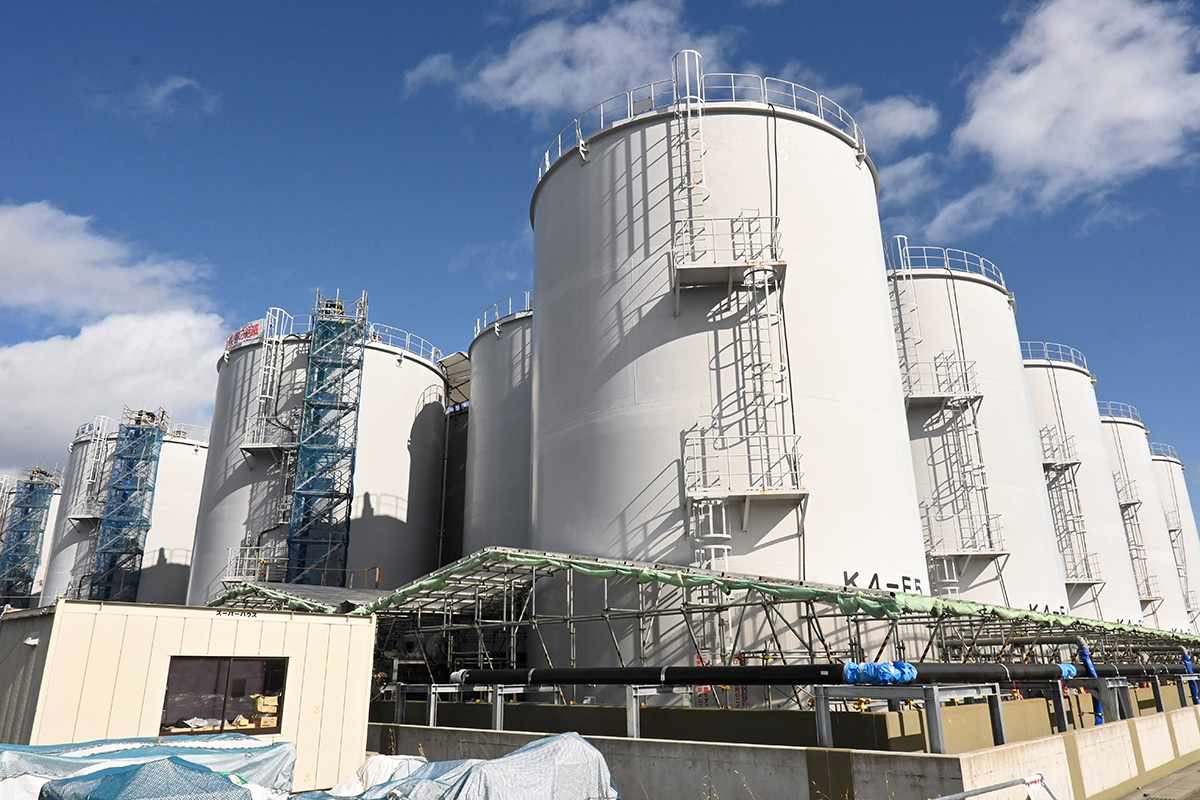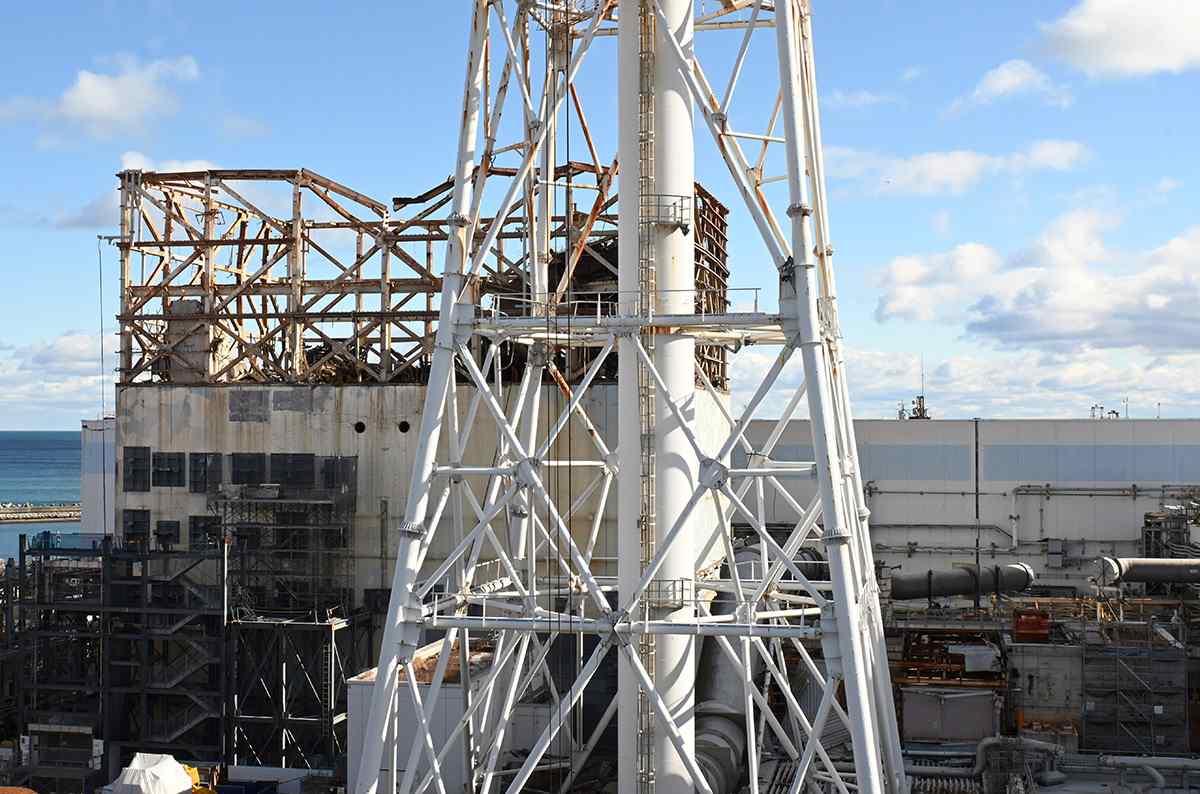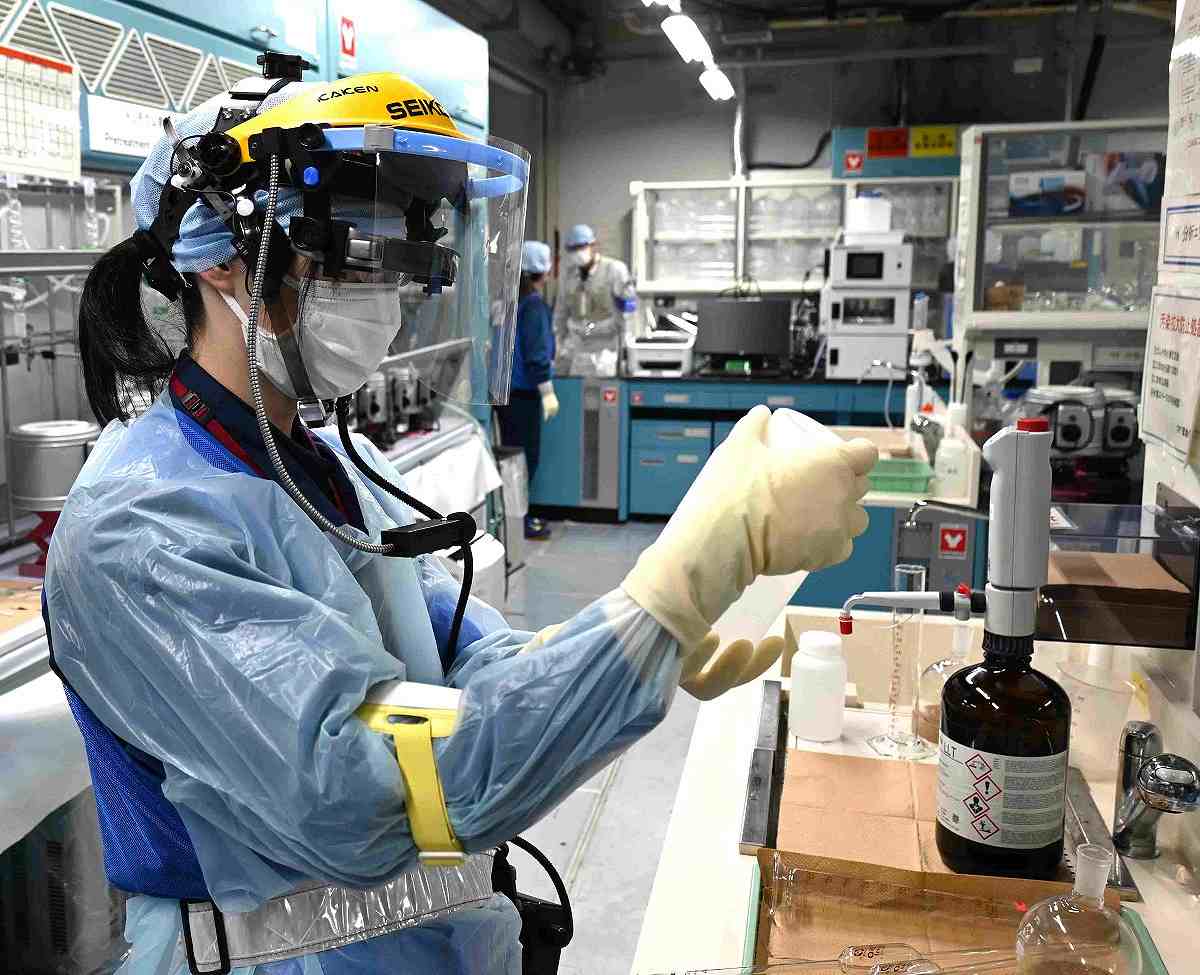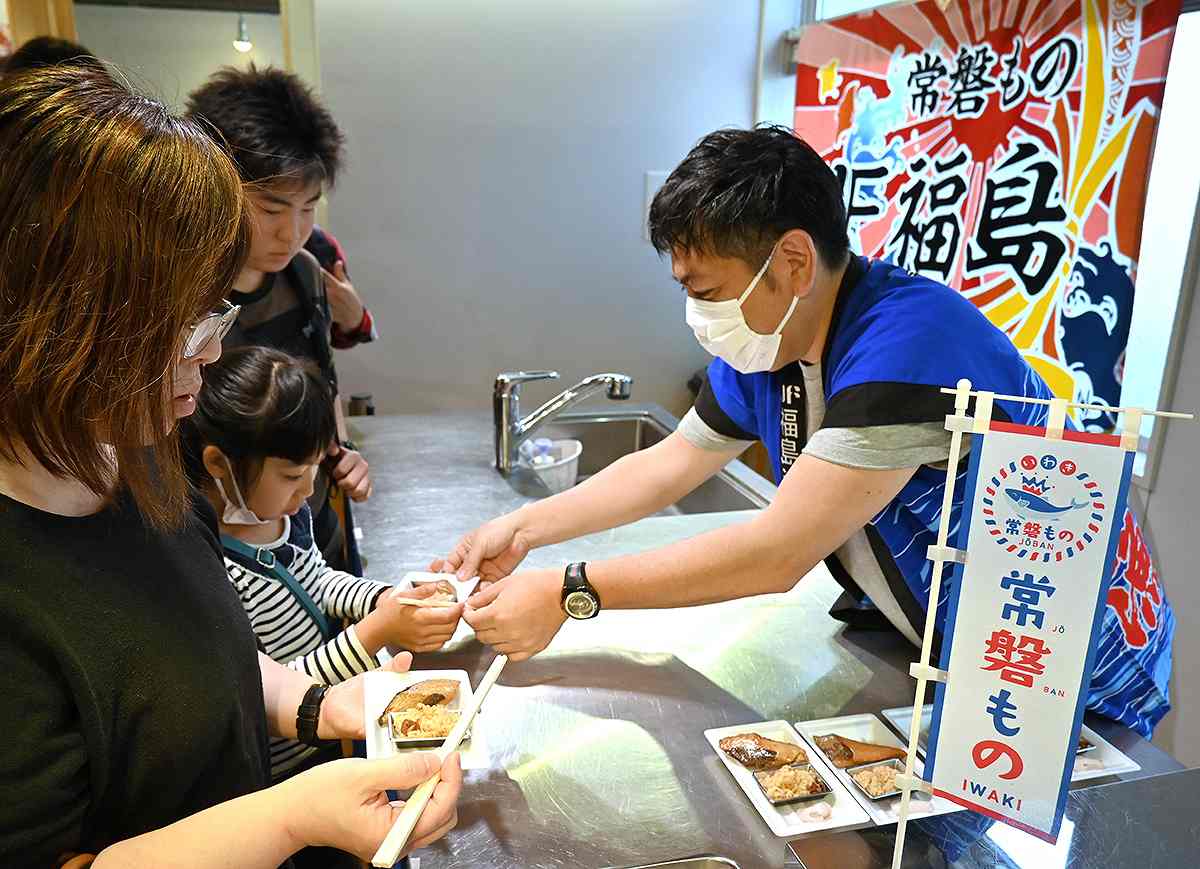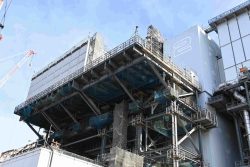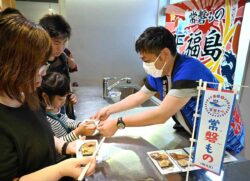
These flounder are raised in seawater with the same tritium concentration as the treated water.
16:38 JST, February 1, 2023
During my visit to the Fukushima No. 1 nuclear power plant, I stepped into a room that at first glance seemed be a fish market or aquaculture facility. Dozens of flounder gathered snugly at the bottom of a fish tank suddenly showed quick reactions when feed was sprinkled into the water.
Flounder and abalone are currently being raised in the same tritium concentration as the treated water that will be discharged into the ocean. Seaweed will be added to the tanks in the future. The purpose of the project is to prove the safety of the treated water generated from the nuclear plant by raising marine species in seawater containing the treated water and ordinary seawater. Tokyo Electric Power Co. Holdings wants to visibly demonstrate that there is no difference between the two.
I was welcomed by Kazuo Yamanaka, TEPCO’s 58-year-old on-site manager, at the one-story breeding and experimental facility near the administration building that serves as the entrance to the Fukushima No.1 nuclear power plant.
-
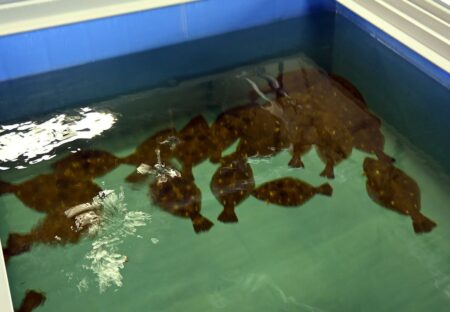
Flounder raised in regular seawater
-
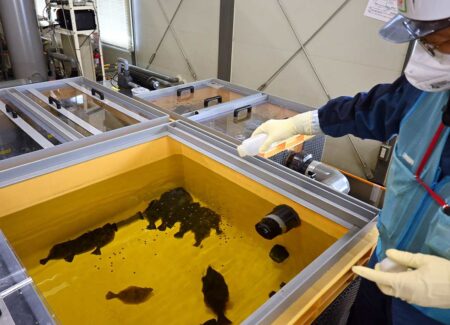
Flounder rarely move at the bottom of the tank, but they suddenly react when being fed.
-
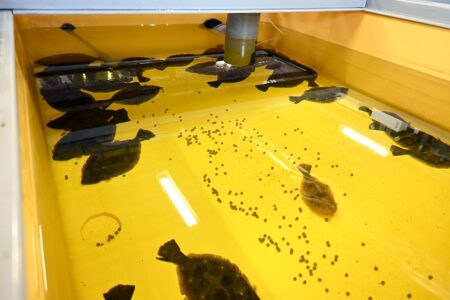
The water in the yellow-walled tank is clear.
“When I asked local residents and people involved in the fishing industry what they think about the release, their biggest concern was the damage caused by rumors,” Yamanaka began. “They said that the best way to curb reputational damage would be for us to show everyone that we actually raise fish in treated water.”
Marine products from offshore Fukushima Prefecture are branded as Joban Mono and flounder is one such local specialty of the region. The prefecture’s association for farming and fisheries provided 800 flounder, half of which are raised in regular seawater, and the other half in seawater with a concentration of about 1,300 becquerels per liter of tritium, which is the same level as the treated water to be released into the ocean, and about 36 becquerels per liter, which is the same concentration assumed to be diluted in the ocean immediately after the discharge. About 800 abalone are also being raised in the same conditions.
Upon entering the breeding facility, I found several knee-high water tanks lined up. Surrounding them were various machines.
“Because the facility is inside a radiation controlled area, even ordinary seawater is considered radioactive liquid waste and cannot be discharged,” Yamanaka said. “For this reason, we designed the facility in such a way that the water will circulate for several years.”
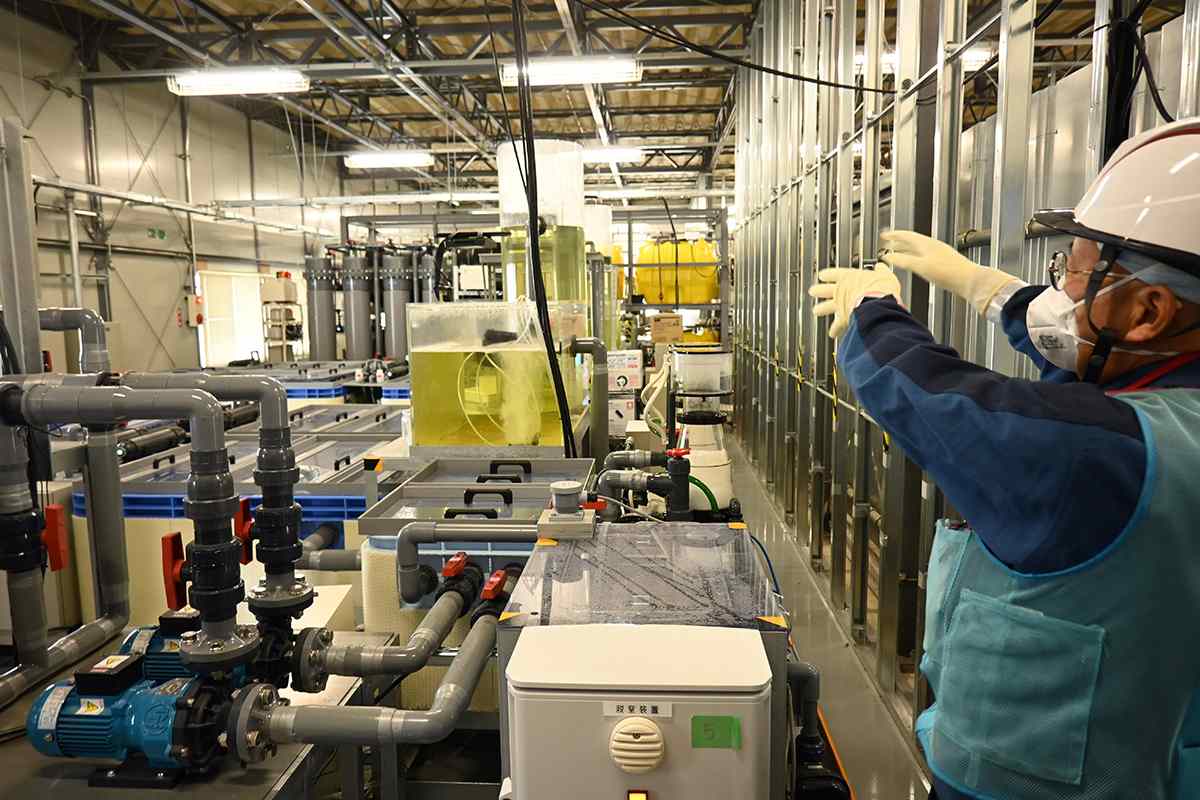
TEPCO’s on-site manager, Kazuo Yamanaka, explains the seawater circulation system in which flounder and abalone are raised.
I then understood that the various machines and tanks are circulation systems. Five large LCD monitors display data necessary for breeding, such as the amount of circulating water, water temperature, salinity, and oxygen, and if any problems are detected, an alert email is sent to the caretakers’ cell phones.
Although some on the marine organisms have died, it has been determined that the cause was not the treated water, but illness or injury.
“It is important to determine the cause of death,” Yamanaka said. If it remains unknown, people will suspect that radioactive substances may have caused the deaths, and the experiment will be counterproductive.
Publicizing information
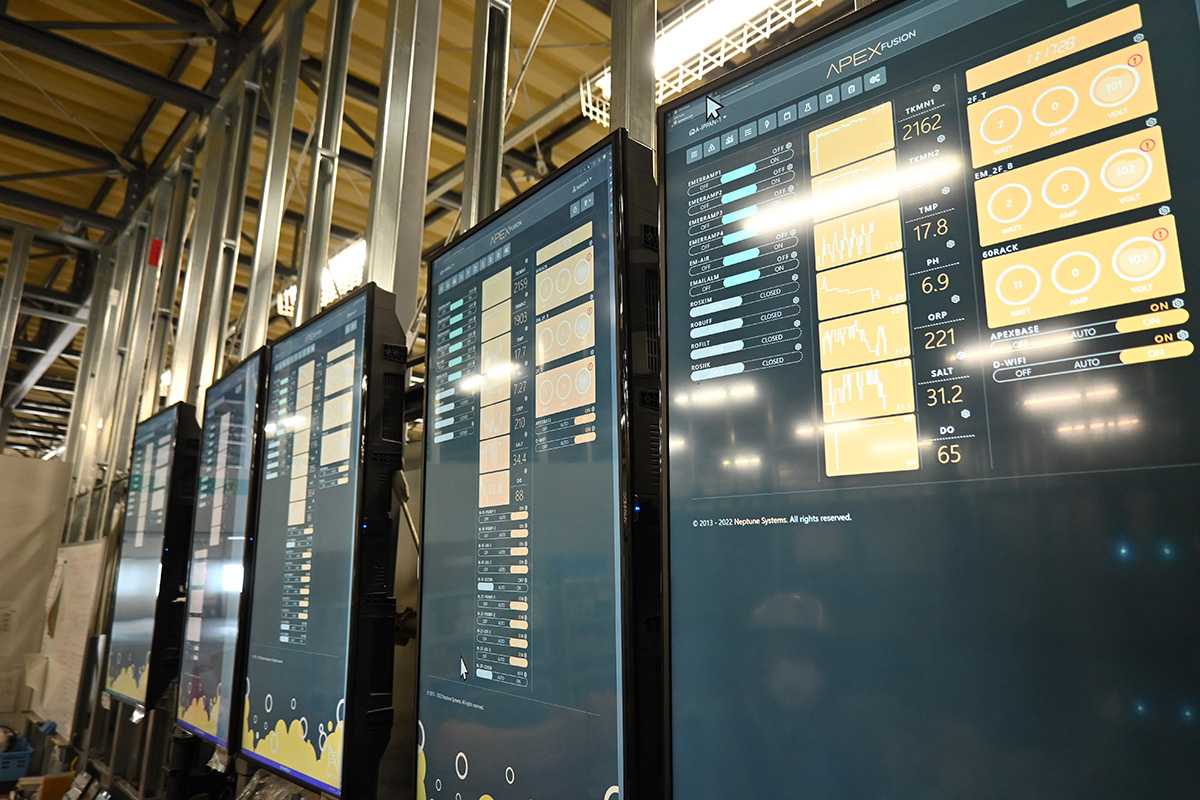
LCD monitors display the status of the circulation system.
Another purpose of the breeding and experimental facility is to publish the data collected.
Practice in raising the fish started in March 2022, and successively from September to November the experiment began to scale up fully with the addition of treated water, which was made using the advanced liquid processing system (ALPS).
According to the measurement results so far, the tritium concentration in the bodies of flounder in tanks of 1,300 becquerels of treated water rises to about 1,100 in 24 hours, then levels off. Later, when these flounder are returned to regular seawater, the concentration drops to an undetectable level in a 24-hour period. These results have been known to the scientific community for some time.
“It is significant that we were able to actually do this and confirm the results as expected,” Yamanaka said. “We found that tritium does not accumulate in the body fluids of flounder.”
However, there is another item to be measured, organically bound tritium, which is taken up by muscles and other organs. After tritium enters the body, it disperses and is taken up by the muscles in a process that is said to take several months. TEPCO will collect and disclose such data in the future.
-
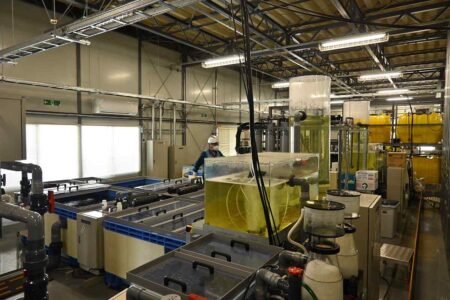
Inside the breeding and experiment facility
-
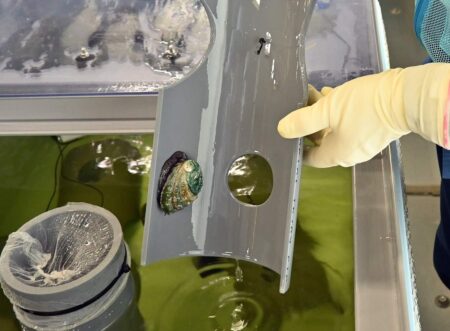
An abalone has attached itself to the back of a piece of equipment.
In order to let the world know about these experiments and the data obtained, TEPCO is broadcasting live on YouTube 24 hours a day from cameras installed in the water of both types of fish tanks. The site is also broadcast live from an overhead camera at a fixed point to avoid any suspicion that TEPCO employees might be doing anything amiss. A daily journal is posted on Twitter and on an internet portal site for treated water.
In the live camera images, the regular seawater appears blue and the treated seawater appears yellow, but this reflects the color of the tank walls, not the water. The Twitter account has about 2,700 followers. The number of views jumps every Friday, because that is the day of the week the number of deaths is announced.
“I guess there is a lot of interest there,” Yamanaka said.
-
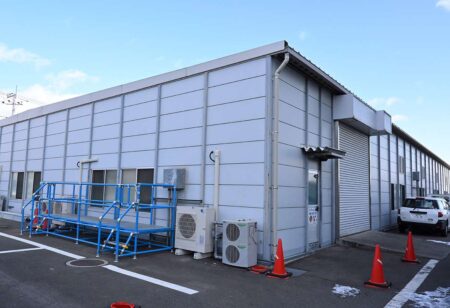
The Japan News
Exterior view of the breeding and experiment facility -

Entrance to the breeding and experiment facility
-
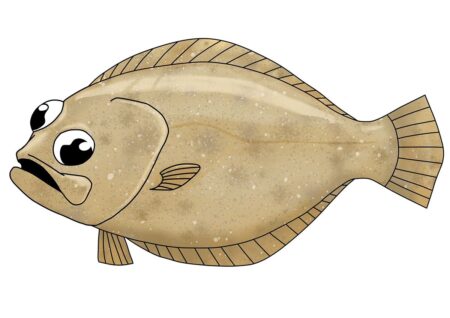
An illustration of a flounder drawn by a female TEPCO employee working at the Fukushima No.1 nuclear power plant (Courtesy of TEPCO)
TEPCO is considering the possibility of using the seawater actually discharged into the ocean to raise the fish once the discharge of treated water begins. In that case, it would be exempt from the Nuclear Reactor Regulation Law. For that reason, they will consider future implementation plans, including eating the flounder and abalone they raise.
■YouTube
https://www.youtube.com/live/fbV3m2hh3YQ?feature
https://twitter.com/TEPCOfishkeeper
■Treated water portal site (English)
https://www.tepco.co.jp/en/decommission/progress/watertreatment/index-e.html
Japanese version
福島第一原発の「処理水」で飼育されるヒラメとアワビ、東京電力がライブで配信
"JN Specialities" POPULAR ARTICLE
-

The Japan News / Weekly Edition (12/12-12/18)
-

English-language Kabuki, Kyogen Entertain Audiences in Tokyo; Portland State University Professor Emeritus, Graduates Perform
-

Noodle Dining Shunsai / Rich Oyster Ramen to Savor at Odasaga; Experienced 68-year-old Owner Creates Numerous Ramen Varieties
-

The Japan News / Weekly Edition (12/5-12/11)
-

People Keep Loved Ones’ Ashes Close in Special Jewelry, Small Urns as Unique Way to Memorialize Them
JN ACCESS RANKING
-

Keidanren Chairman Yoshinobu Tsutsui Visits Kashiwazaki-Kariwa Nuclear Power Plant; Inspects New Emergency Safety System
-

Imports of Rare Earths from China Facing Delays, May Be Caused by Deterioration of Japan-China Relations
-

University of Tokyo Professor Discusses Japanese Economic Security in Interview Ahead of Forum
-

Tokyo Economic Security Forum to Hold Inaugural Meeting Amid Tense Global Environment
-

Japan Pulls out of Vietnam Nuclear Project, Complicating Hanoi’s Power Plans
